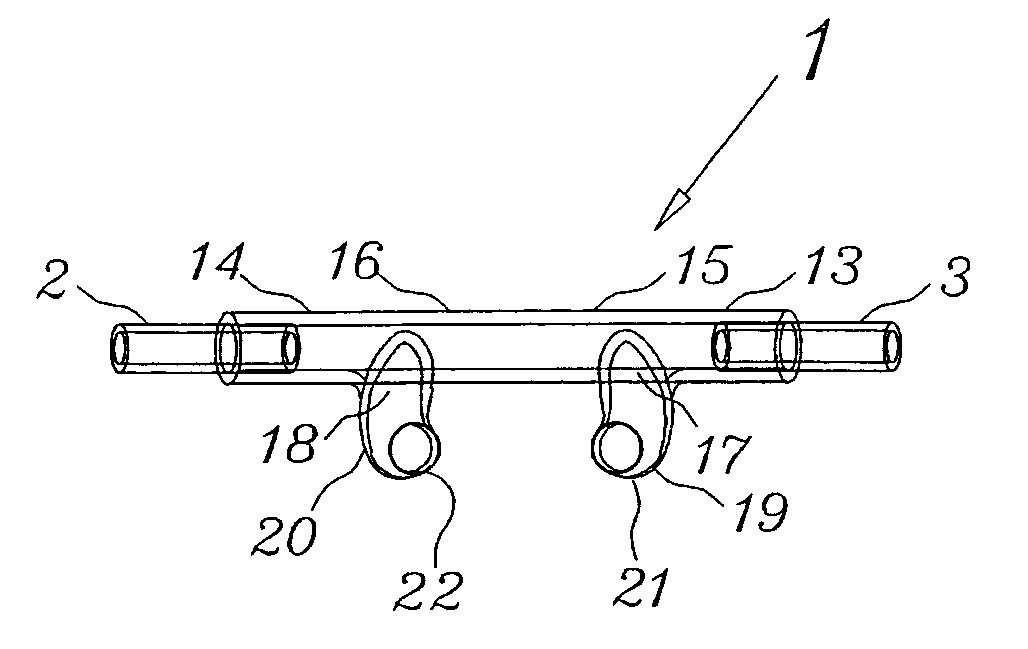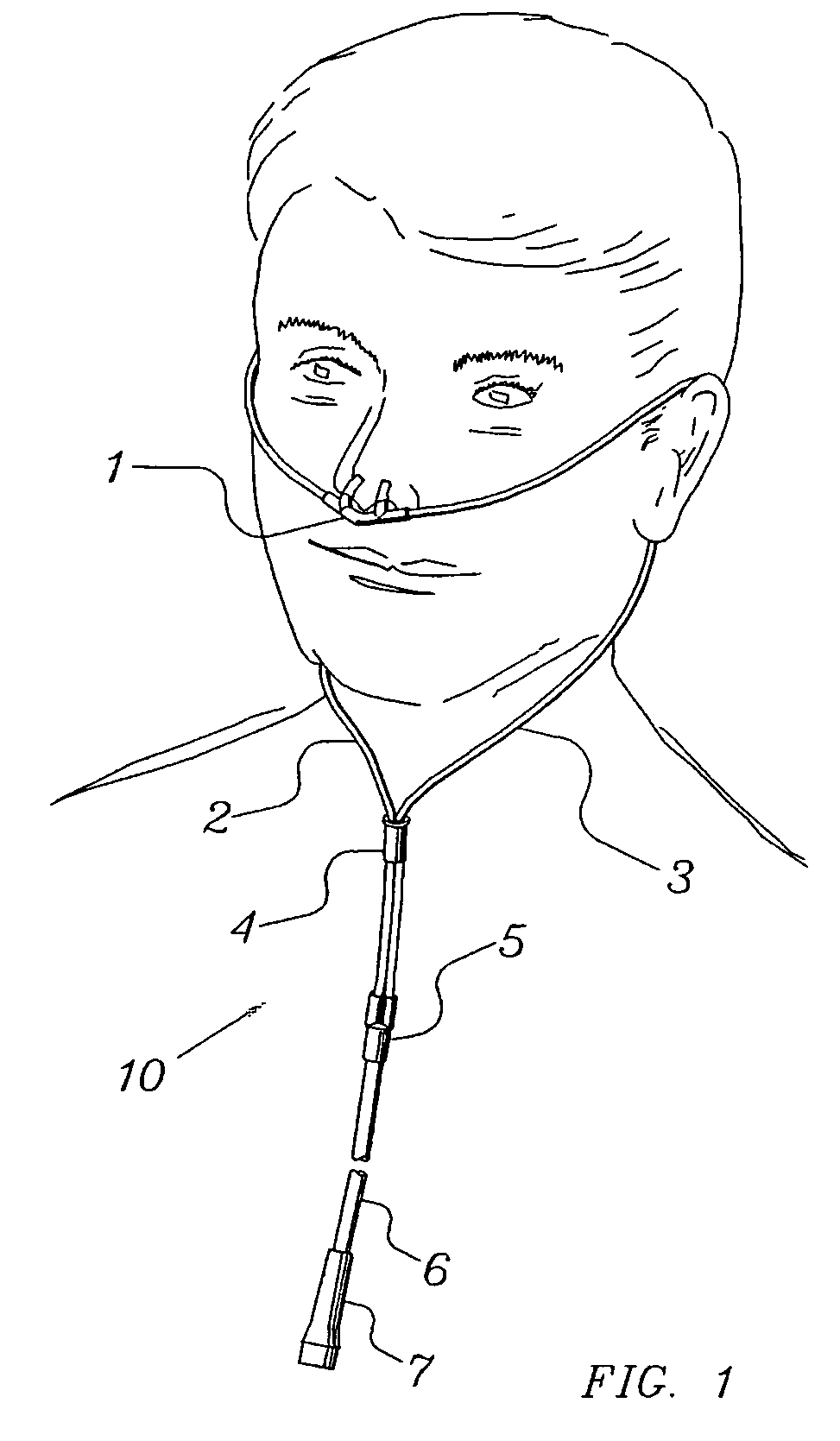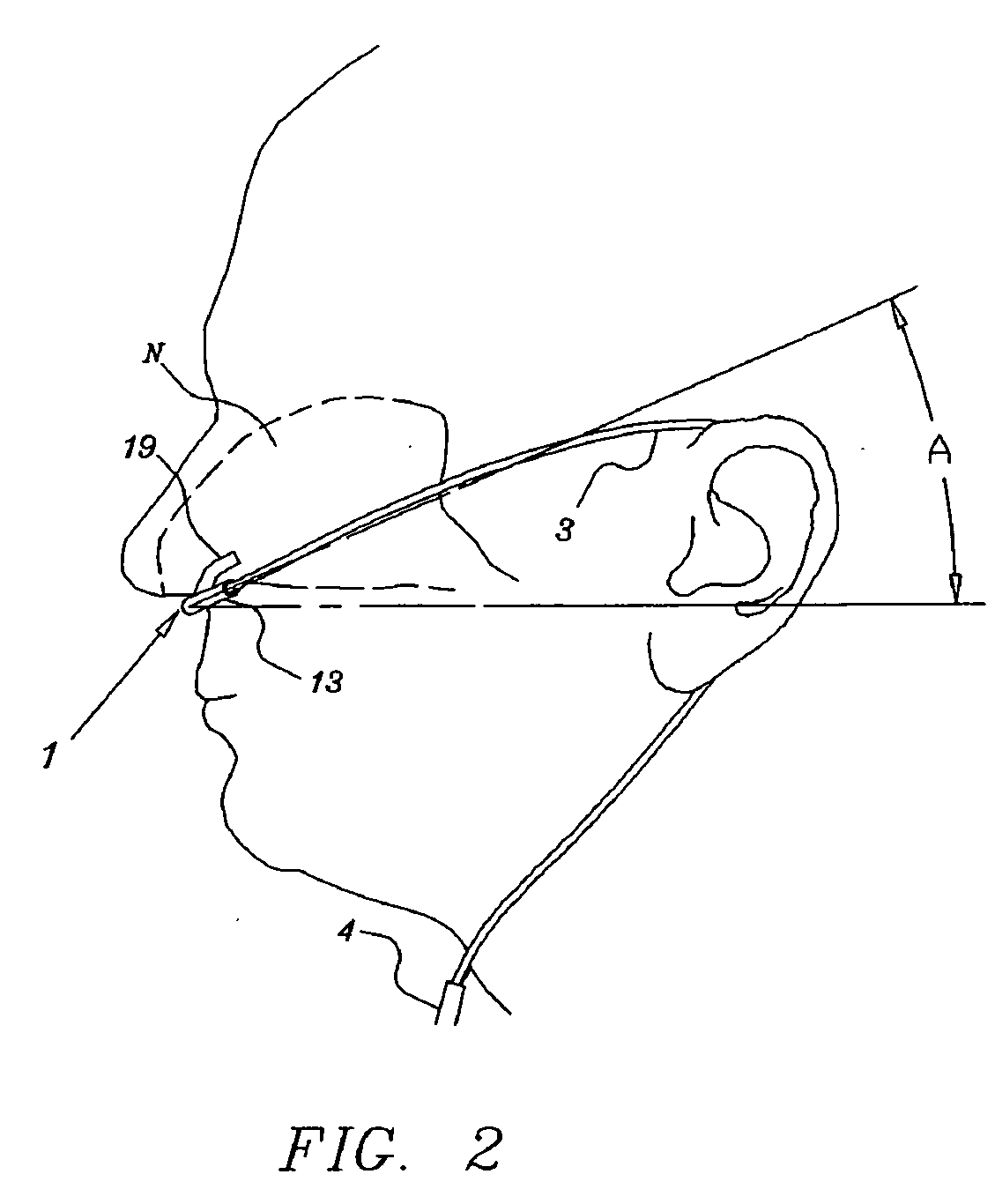Nasal cannula assembly
a cannula and nasal tube technology, applied in the field of cannula assembly, can solve the problems of pain for patients, deep and irritating impression, and pain of patients, and achieve the effects of small size, stable position, and barely felt by wearers
- Summary
- Abstract
- Description
- Claims
- Application Information
AI Technical Summary
Benefits of technology
Problems solved by technology
Method used
Image
Examples
Embodiment Construction
[0038] The novel nasal cannula assembly will now be described by referring to the drawings. In FIG. 1, the cannula assembly, generally designated numeral 10 is illustrated in position on a patient's face. The assembly comprises nasal cannula 1, a pair of support tubes 2 and 3 connected to opposite ends of the cannula, main oxygen supply line 6, fork connector 5 for joining support tubes 2 and 3 to main supply tube 6 and a slip loop 4 disposed about support tubes 2 and 3. The structure of cannula 1 is best understood by viewing FIGS. 3-5. The composition of the cannula is preferably of a thermoplastic composition such as polyvinyl chloride or polyvinyl acetate that are quite pliable or flexible and is normally fabricated using a dip molding process, although the shape of the cannula is suitable for injection molding. The plasticizer used to add flexibility is preferably one that resists migration from the cannula to the skin.
[0039] The cannula is generally a hollow tubular member ha...
PUM
 Login to View More
Login to View More Abstract
Description
Claims
Application Information
 Login to View More
Login to View More - R&D
- Intellectual Property
- Life Sciences
- Materials
- Tech Scout
- Unparalleled Data Quality
- Higher Quality Content
- 60% Fewer Hallucinations
Browse by: Latest US Patents, China's latest patents, Technical Efficacy Thesaurus, Application Domain, Technology Topic, Popular Technical Reports.
© 2025 PatSnap. All rights reserved.Legal|Privacy policy|Modern Slavery Act Transparency Statement|Sitemap|About US| Contact US: help@patsnap.com



